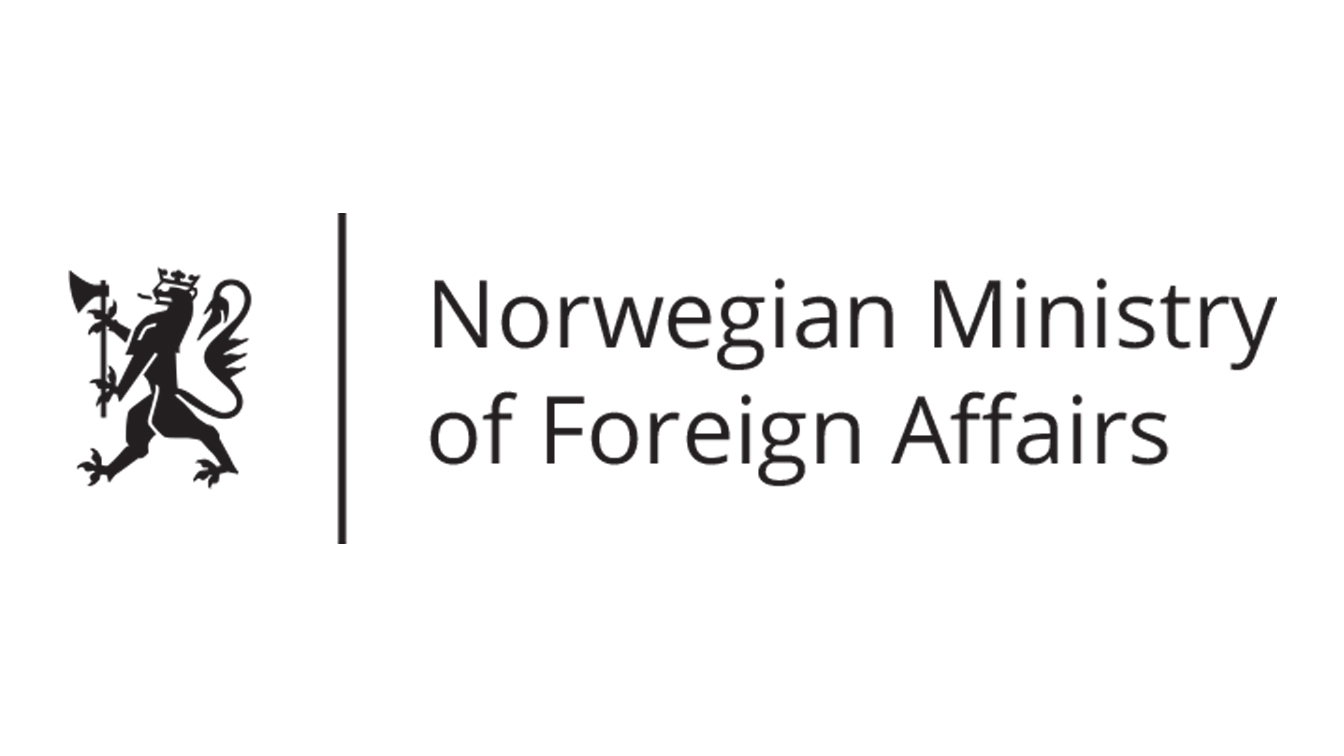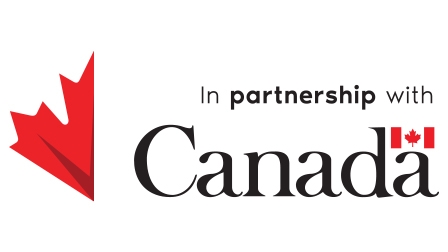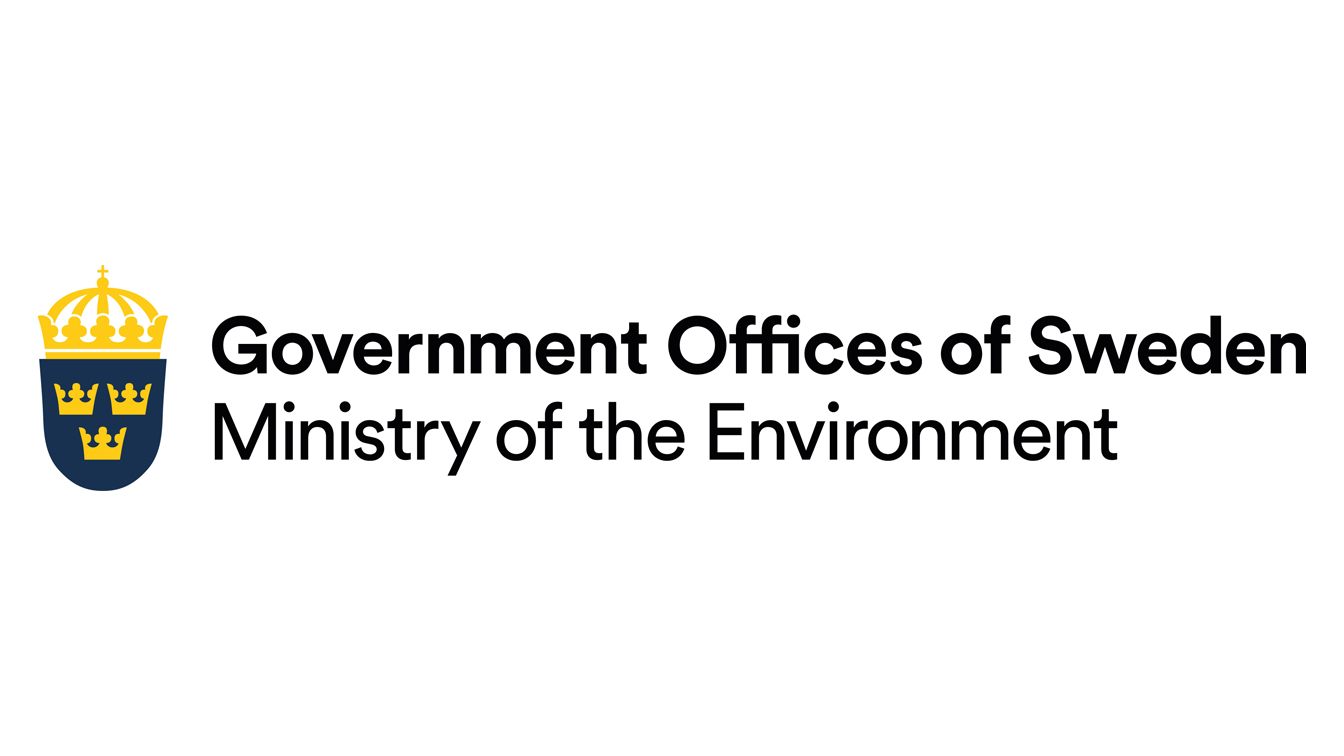The Water and Sanitation Challenge
Still Only One Earth: Lessons from 50 years of UN sustainable development policy
Water and sanitation services have been on the international agenda since the 1972 Stockholm Conference on the Human Environment. But long-term financial investments into the necessary infrastructure have been insufficient, and international targets were initially set too low. For universal access to become a reality, governments and private-sector service providers should adopt a human rights-based approach to ensure water and sanitation services are safe, available, accessible, affordable, and culturally acceptable. (Download PDF) (See all policy briefs) (Subscribe to ENB)
At some time, most of us have experienced the frustration of a blocked toilet for a few hours or days. Now imagine your life without a working toilet—ever.
This is the reality for 673 million people in the world today—about twice the population of the United States—who don’t have a toilet in their homes (UNICEF & WHO, 2020). Moreover, 698 million school-age children do not have basic sanitation services at school and more than half the world’s population—4.3 billion—use sanitation services that release untreated human waste into the environment, contaminating water sources (UNICEF & WHO, 2020).
That is not all. Three of every 10 people, or 2.1 billion, still do not have access to safe drinking water, whether from household or public taps, bottled water deliveries, rainwater, borewells, or natural springs protected from contamination (WHO & UNICEF, 2017). Every day, 700 children under five years of age die from a diarrheal disease. That is about one child every two minutes. If you have an average reading speed, by the time you reach the end of this brief, 11 children will have died.
Many such deaths could be prevented if everyone had access to safe drinking water, sanitation services, and good hygiene. Access to water, sanitation, and hygiene (WASH) also improves opportunities for education and work; for example, availability of facilities to manage menstrual hygiene in schools clearly improves girls’ attendance, in both rich and poor countries alike (Tegegne & Sisay, 2014; Sebert Kuhlmann et al., 2020).
The 1972 Stockholm Conference on the Human Environment identified “health and sanitation” as necessities for a decent life, along with food, clothing, shelter, and education. The resulting Stockholm Action Plan’s 109 recommendations included calls for water supply, sewerage and waste disposal systems adapted to local conditions. Yet, 50 years later, ensuring water and sanitation for all remains one of the world’s biggest challenges.
Did International Action Achieve Water and Sanitation Targets?
Five years after the 1972 Stockholm Conference, the first-ever UN international water summit convened in Mar del Plata, Argentina. The summit discussed water use and efficiency, environment, and health and pollution control, among other objectives. The summit also adopted the Mar del Plata Action Plan and called for an International Drinking Water Supply and Sanitation Decade to be observed from 1981-1990—a recommendation the UN General Assembly later adopted.
The Mar del Plata summit and the International Decade boosted action to improve the lives of the millions without access to potable water and toilets and drew attention to the need for a holistic approach that would include care for water in the environment. But toward the close of that decade, despite some progress, developing countries still lacked the necessary financing, technology, and human resource capacity to fulfil their own national action plans on water and sanitation (Biswas, 1988). One reason was that development banks had introduced stricter conditionalities on borrowing during the 1980s, limiting the opportunities for poorer countries to establish the large-scale infrastructure they needed (Muller, 2015). Other factors, such as rapid urbanization and rise of informal urban settlements around many cities, also posed challenges for governments in providing water and sanitation services.
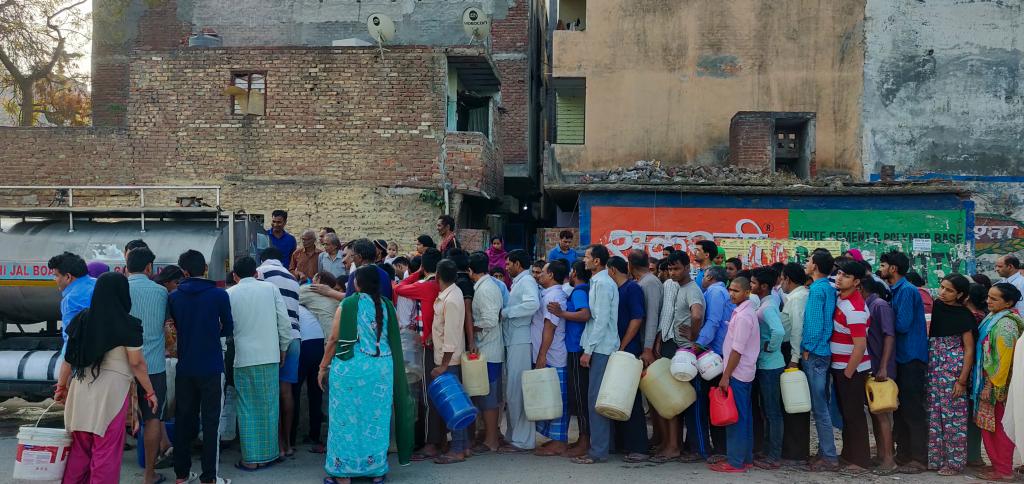
The 1992 International Conference on Water and the Environment in Dublin, Ireland, convened just prior to the UN Conference on Environment and Development (Earth Summit) in Rio de Janeiro and set the framework for integrated water resource management (IWRM) that governments and others sought to implement in the long term. The “Dublin Principles” that emerged from these deliberations were incorporated into Chapter 18 of Agenda 21, the programme of action adopted in Rio in June 1992. The Principles addressed catchment management, the importance of the role of women, and participation by local communities and other stakeholders in water management. They became widely accepted in the world of water policy, at least in principle. However, developing countries and poorer populations did not necessarily benefit from technical advice on institution building and stakeholder participation when what they wanted was water pipes and treatment plants. The deliberative democracy approach promoted through IWRM was also difficult to achieve, even in countries with strong and liberal democratic systems (Muller, 2015).
The water and sanitation agenda received a boost when UN Member States adopted the Millennium Development Goals (MDGs) in 2000. The MDGs focused on solving global poverty and served as a framework to coordinate donor aid toward implementing international commitments. MDG 7 contained a suite of environmentally related targets, including target 7C that pledged to halve the proportion of the world’s population lacking sustainable access to safe drinking water and basic sanitation by 2015.
UN agencies reported achievement of MDG target 7C by 2010, five years ahead of schedule, with 2.6 billion people reportedly gaining access to “improved” drinking water sources. The criteria for achievement, however, were set too low. The indicator, “access to an improved water source,” did not consider water quality. A new tap or pump well could be delivering contaminated water and would still qualify as “improved,” under this criterion (Weststrate et al., 2019). Another indicator, “access to an improved sanitation facility,” did not include any requirement for the safe collection, treatment, and disposal of wastewater and fecal sludge. While the UN’s Joint Monitoring Programme estimated 62% of the world’s population had access to basic sanitation, other assessments that included sewage treatment as a criterion placed that figure at just 40% (Weststrate et al., 2019).
The extent to which water resources development contributes to economic productivity and social well-being is not usually appreciated, although all social and economic activities rely heavily on the supply and quality of freshwater
UN Member States committed to a higher level of ambition when they adopted the 17 Sustainable Development Goals (SDGs) in September 2015. SDG 6 on access to water and sanitation contains targets for wastewater treatment, water-use efficiency, IWRM (including transboundary cooperation), and the protection and restoration of water-related ecosystems. SDG 6 also includes implementation-focused targets for international cooperation and capacity building, and for participation of local communities in improving water and sanitation management.
While the MDG target was limited in scope, SDG 6 reflects the holistic approach that was advocated in the early global conferences on water. It takes into account the entire water cycle, as well as the human and institutional capacities that will be needed to deliver water and sanitation for all.
SDG 6: Ensure availability and sustainable management of water and sanitation for all
| 6.1 | By 2030, achieve universal and equitable access to safe and affordable drinking water for all |
| 6.2 | By 2030, achieve access to adequate and equitable sanitation and hygiene for all and end open defecation, paying special attention to the needs of women and girls and those in vulnerable situations |
| 6.3 | By 2030, improve water quality by reducing pollution, eliminating dumping, and minimizing release of hazardous chemicals and materials, halving the proportion of untreated wastewater, and substantially increasing recycling and safe reuse globally |
| 6.4 | By 2030, substantially increase water-use efficiency across all sectors and ensure sustainable withdrawals and supply of freshwater to address water scarcity and substantially reduce the number of people suffering from water scarcity |
| 6.5 | By 2030, implement integrated water resources management at all levels, including through transboundary cooperation as appropriate |
| 6.6 | By 2020, protect and restore water-related ecosystems, including mountains, forests, wetlands, rivers, aquifers, and lakes |
| 6.A | By 2030, expand international cooperation and capacity-building support to developing countries in water- and sanitation-related activities and programmes, including water harvesting, desalination, water efficiency, wastewater treatment, recycling, and reuse technologies |
| 6.B | Support and strengthen the participation of local communities in improving water and sanitation management |
Going Beyond Toilets and Taps
Human health and environmental quality are connected. Rivers, lakes, forests, and all water-related ecosystems influence the quality and quantity of available water for urban and rural populations. Where environmental degradation occurs, the goal of providing safe drinking water and sanitation gets harder to reach. Deforestation of watersheds can increase flash floods and landslides, increasing the sediment load and turbidity of water sources, and decreasing household access to clean drinking water (Mapulanga & Naito, 2019). Water quality is also affected by excessive nutrients from fertilizers and detergents, salinity intrusion, and organic waste. Developing countries discharge almost 90% of sewage untreated into water bodies, and 1.8 billion people use a source of drinking water with fecal contamination (Bhaduri et al., 2016). The UN Joint Monitoring Programme on water and sanitation anticipates that, at the current rate of progress, by 2030 there will still be 1.6 billion people in the world without access to safe drinking water at home.
These pressures have increased in the 50 years since the Stockholm Conference and the impacts are not limited to developing countries. In 2021, UN-Water reported 80% of the world’s wetland ecosystems, which play important roles in filtering out sediment and pollutants, are already lost.
For everyone to have access to safe drinking water and properly managed sanitation services, water security is an integral concern. There needs to be greater emphasis on managing water risk and adopting a precautionary approach at every level of governance.
The World Water Assessment Programme, coordinated by the UN Educational, Scientific and Cultural Organization (UNESCO), issues regular assessments on the state of the world’s freshwater resources. Such reports have promoted understanding of water risk as a product of drivers such as agriculture, food and energy demand, international trade, and climate change.
Concepts of “virtual water,” “water footprint,” and “green water” underline the interconnections between water resources and environmental quality with trade and land use patterns, and show who benefits, or not, from available water. For example, the calculation of water footprints—the amount of water used to produce particular goods or services—can show which activities are the most water- intensive. The water footprint of a golf course requiring lavish watering may be difficult to justify in places where residents are subject to water rationing as reservoir levels fall. Similarly, the concept of virtual water takes into account the water used in traded products, from coffee to cars to computers. Some products may be grown or manufactured in water-scarce regions and then exported to water-rich regions, compounding patterns of global inequity (Gupta et al., 2013).
Green water—the water available to support terrestrial ecosystems—maintains the healthy forests and grasslands that support the water cycle. Water is indeed “the bloodstream of the biosphere” (Falkenmark, 2017).
Over 2 billion people live in countries experiencing high water stress, and about 4 billion people experience severe water scarcity during at least one month of the year. Stress levels will continue to increase as demand for water grows and the effects of climate change intensify
Climate change is leading to greater variability in the water cycle and is one of the global drivers of demand for water resources for use in producing energy, food, and other necessities. UN-Water, which coordinates the efforts of UN entities and international organizations working on water and sanitation issues, has called for greater investment in producing hydrological data, conducting risk assessment, and educating water users, ultimately building capacity and expertise for better water management. As countries prepare their national adaptation plans (NAPs) and other climate-related strategies, action on water risk must be a key part of solutions.
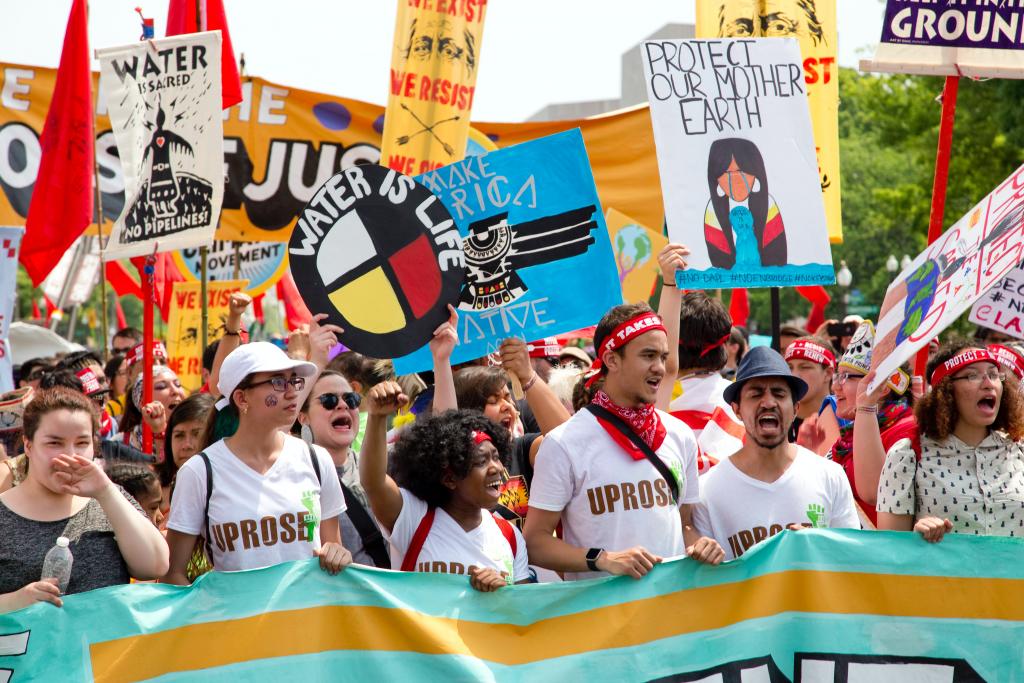
Focusing on the Poorest
Exposure to water risk is not the same for everyone. Minorities, slum dwellers, and the poor face higher levels of risk. Even in places where water is abundant and infrastructure sufficient, issues of social exclusion and inequality can limit universal access to water and sanitation.
The UN World Water Development Report 2019 noted poor communities often do not benefit from government investment in water and sewage infrastructure. They may live in temporary dwellings or shantytowns that don’t have infrastructure connections. They may pay higher prices for water they buy directly from vendors than they would for piped water.
For example, women and girls in low-income countries spend some 40 billion hours a year collecting water. That is equivalent to the annual effort of the entire workforce of a country like France. The time spent could be much better invested in earning a livelihood or—in the case of girls—attending school. It is time to change how we value and manage water (Guterres, 2018).
For universal access to become a reality, governments and private-sector service providers should adopt a human rights-based approach to ensure water and sanitation services are safe, available, accessible, affordable, and culturally acceptable. Access to services should be monitored through the experiences of women and minorities. Setting global priorities for climate-resilient water and sanitation could address, for example, the provision of drinking water and sanitation services in places where there is large-scale human displacement. While cost recovery measures for water and sanitation services are appropriate in some contexts, collecting disaggregated data will help determine which groups are at highest risk of being left behind and what services should be subsidized.
More than 30 UN organizations conduct water and sanitation programmes. UN-Water convenes meetings twice a year as a global coordinating platform for the UN family of organizations active in this area. The UN-hosted Sanitation and Water for All (SWA) partnership, founded in 2009, has more than 270 voluntary partners, including development banks and philanthropic foundations, as well as more than 170 civil society, private sector, and academic organizations.
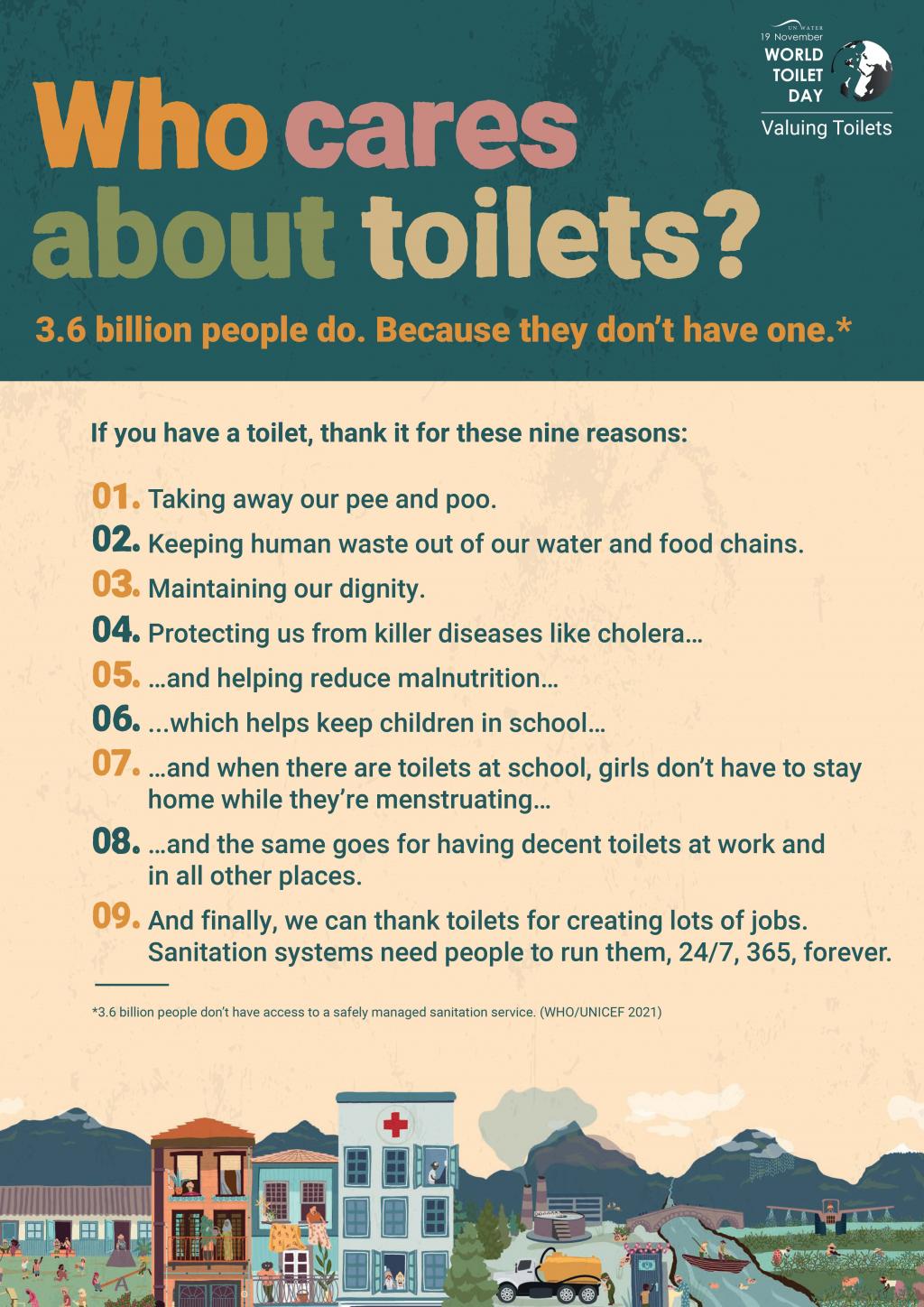
Despite these efforts, the world is far from achieving water and sanitation for all by 2030. To meet the 2030 deadline for the SDGs, progress on some targets needs to be about four times faster, according to UN-Water’s own monitoring mechanism on SDG 6.
The UN launched a new International Decade for Action on Water and Sanitation in 2018. International campaigns and special days, such as World Water Day and World Toilet Day, continue to promote action on water and sanitation through public awareness activities, conferences, and events. In March 2023, UN Member States will hold a three-day high-level summit and mid-term review of the Decade’s achievements. At the 35th UN-Water meeting in 2021, delegates proposed the summit should link SDG 6 targets to other objectives, including good governance, gender equality, climate action, and human rights.
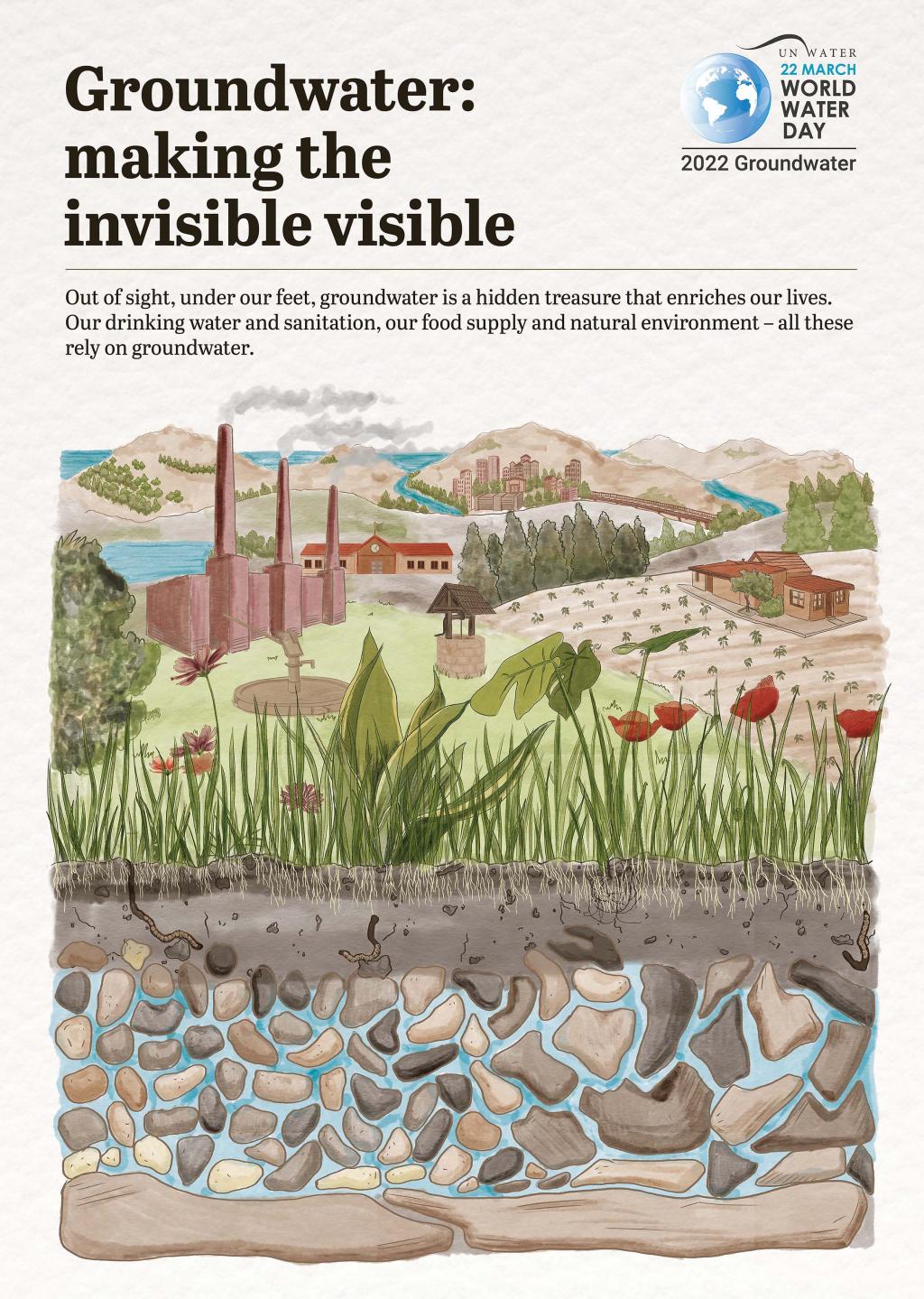
For all the goodwill and political commitment expressed, meetings and targets on water will not be enough. Water and sanitation are also influenced by action on biodiversity, land use, chemicals and waste, and disaster risk reduction, in addition to the crosscutting objectives proposed by UN-Water. Global agreement-making in all these areas already includes commitments to increase development aid, enable access to technology, and promote a just and fair society. Concerted efforts across all these areas are needed to achieve water and sanitation for all. Fulfilment of countries’ commitments under various global agreements will contribute to achievement of SDG 6—and failure to meet commitments will hinder it.
For example, increasing financing for adaptation to climate change—a promise of the 2021 Glasgow Climate Change Conference—could help protect threatened water resources. Tree planting to counter rising temperatures in cities, say, would also increase green water in the landscape, promoting water security. Infrastructure to protect coastal communities against storm surges could also prevent salinization of freshwater sources. Projects to house displaced people could include connections to wastewater and sewage treatment.
There needs to be a greater focus on the governance of water security, including responsibility and accountability for agreed standards, enforcement against polluters, and anti-corruption measures—issues that often block progress. Creative financing methods such as Costa Rica’s wastewater discharge environmental fee, Cambodia’s sanitation development impact bond, and Kenya’s credit rating scheme for utilities—described in a 2020 handbook for finance ministers released by SWA in 2020—could be part of the policy mix. Education for “water literacy” to increase understanding of the water cycle and the drivers of water risk will also promote adoption of strict policy measures in favor of needed water security.
It is time to change how we value and manage water.
Drinking a glass of water straight from the tap or flushing a toilet in the privacy of one’s home cannot be taken for granted. Social inequalities mean many people today do not have these two options. For many more, water risk in their part of the world also means the future might not include them.
A Slovakian proverb states, “Pure water is the world’s first and foremost medicine.” The world should prioritize action for universal access to water and sanitation—not only for human health, but also because ensuring water supply and treating wastewater are among the best ways to maintain a healthy planet.
Works Consulted
Bhaduri, A., Bogardi, J., Siddiqi, A., Voigt, H., Vörösmarty, C., Pahl-Wostl, C., Bunn, S. E., Shrivastava, P., Lawford, R., Foster, S., Kremer, H., Renaud, F. G., Bruns, A., & Osuna, V. R. (2016). Achieving Sustainable Development Goals from a water perspective. Frontiers in Environmental Science, 4. doi.org/10.3389/fenvs.2016.00064
Biswas, A.K. (1988). United Nations water conference action plan. International Journal of Water Resources Development, 4(3), 148-159, doi.org/10.1080/07900628808722385
Falkenmark, M. (2016). Water and human livelihood resilience: A regional-to-global outlook, International Journal of Water Resources Development 33(2), 181-197. doi.org/10.1080/07900627.2016.1190320
Gupta, J., Pahl-Wostl, C., & Zondervan, R. (2013). ‘Glocal’ water governance: A multi-level challenge in the anthropocene. Current Opinion in Environmental Sustainability, 5 (6), 573–580. doi.org/10.1016/j.cosust.2013.09.003
Guterres, A. (2018). Remarks at launch of International Decade for Action “Water for Sustainable Development” 2018-2028. un.org/sg/en/content/sg/speeches/2018-03-22/decade-action-watersustainable-development-remarks
Mapulanga, A.M., & Naito, H. (2019). Effect of deforestation on access to clean drinking water. Proceedings of the National Academy of Sciences, 116(17), 8249-8254 doi.org/10.1073/pnas.1814970116
Muller, M. (2015). The ‘nexus’ as a step back towards a more coherent water resource management paradigm. Water Alternatives 8(1). 675-694. water-alternatives.org/index.php/all-abs/271-a8-1-4/file
Sebert Kuhlmann, A., Key, R., Billingsley, C., Shato, T., Scroggins, S., & Teni, M. T. (2020). Students’ menstrual hygiene needs and school attendance in an urban St. Louis, Missouri, district. The Journal of Adolescent Health, 67(3), 444–446. doi.org/10.1016/j.jadohealth.2020.05.040
Tegegne, T.K., & Sisay, M.M. (2014). Menstrual hygiene management and school absenteeism among female adolescent students in Northeast Ethiopia. BMC Public Health 14, 1118. doi.org/10.1186/1471-2458-14-1118
United Nations Children’s Fund & World Health Organization. (2020). State of the world’s sanitation: An urgent call to transform sanitation for better health, environments, economics and societies. who.int/publications/i/item/9789240014473
Weststrate, J., Dijkstra, G., Eshuis, J., Gianoli, A., & Rusca, M. (2018). The Sustainable Development Goal on water and sanitation: Learning from the Millennium Development Goals. Social Indicators Research, 143(2), 795–810. doi.org/10.1007/s11205-018-1965-5
World Health Organization & United Nations Children’s Fund. (2017). Progress on drinking water, sanitation, and hygiene: 2017 updates and SDG baselines. data.unicef.org/resources/progress-drinking-watersanitation-hygiene-2017-update-sdgbaselines/
Additional downloads
You might also be interested in
A Warming Arctic is a Warning for the World
To protect the Arctic, stronger and broader local, national, and international measures to reduce greenhouse gas emissions must be implemented.
The Rising Pressures on Ocean Governance
The ocean is under serious threat. Stressors include overfishing, marine pollution, habitat destruction, and acidification.
National State of the Environment Report: Uzbekistan
The National State of the Environment Report (NSoER) is a comprehensive document that provides a snapshot of current environmental trends in Uzbekistan's socio-economic development for citizens, experts, and policy-makers in the country of Uzbekistan.
Web of resilience
Pakistan's development model has still not recognised the limits of the natural environment and the damage it would cause, if violated, to the sustainability of development and to the health and well-being of its population. Pakistan’s environment journey began with Stockholm Declaration in 1972. A delegation led by Nusrat Bhutto represented the country at the Stockholm meeting, resulting in the establishment of the Urban Affairs Division (UAD), the precursor of today’s Ministry of Climate Change. In setting the country’s environmental agenda, we were inspired by the Stockholm Principles, but in reality, we have mostly ignored them for the last five decades.

